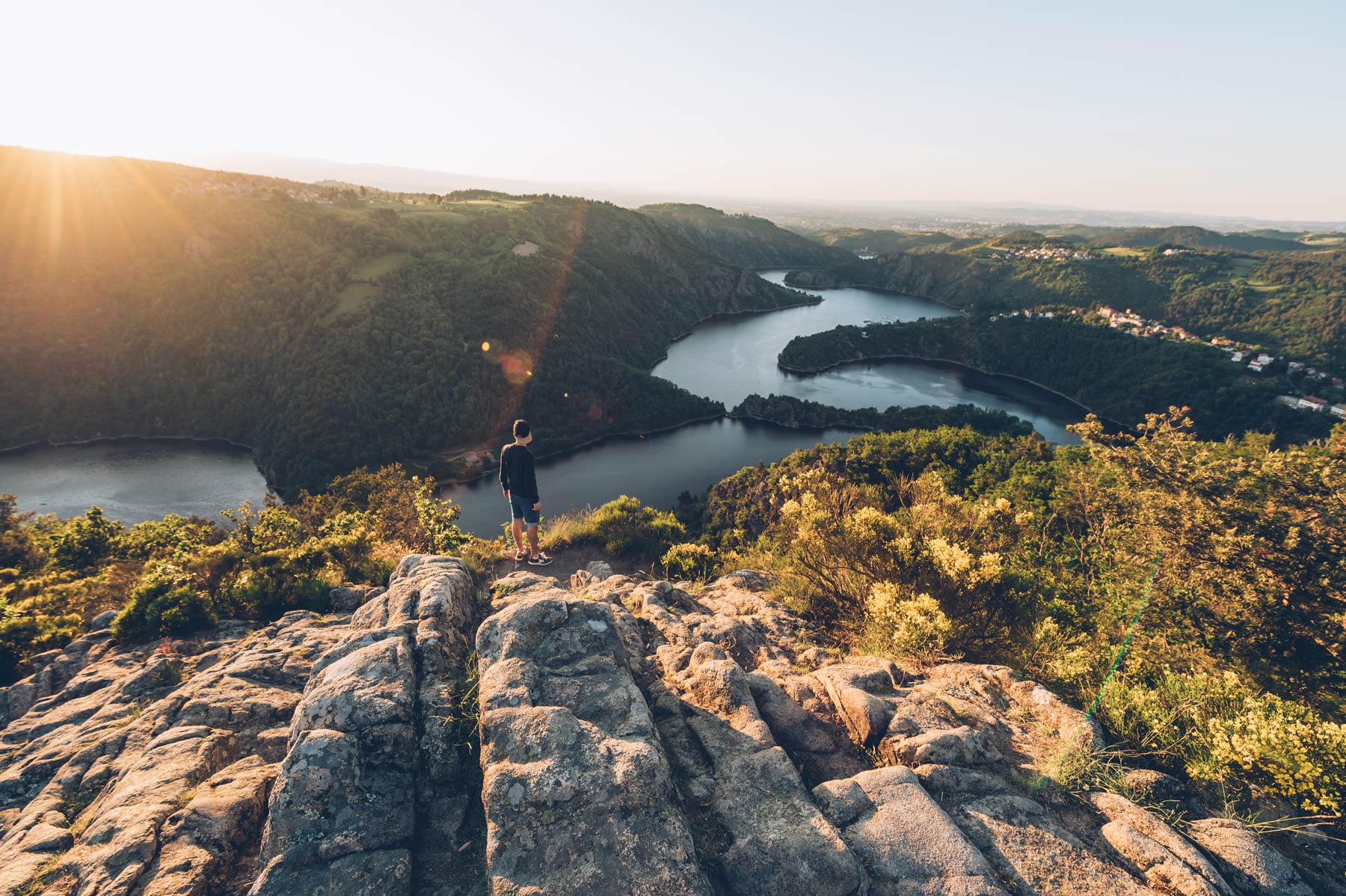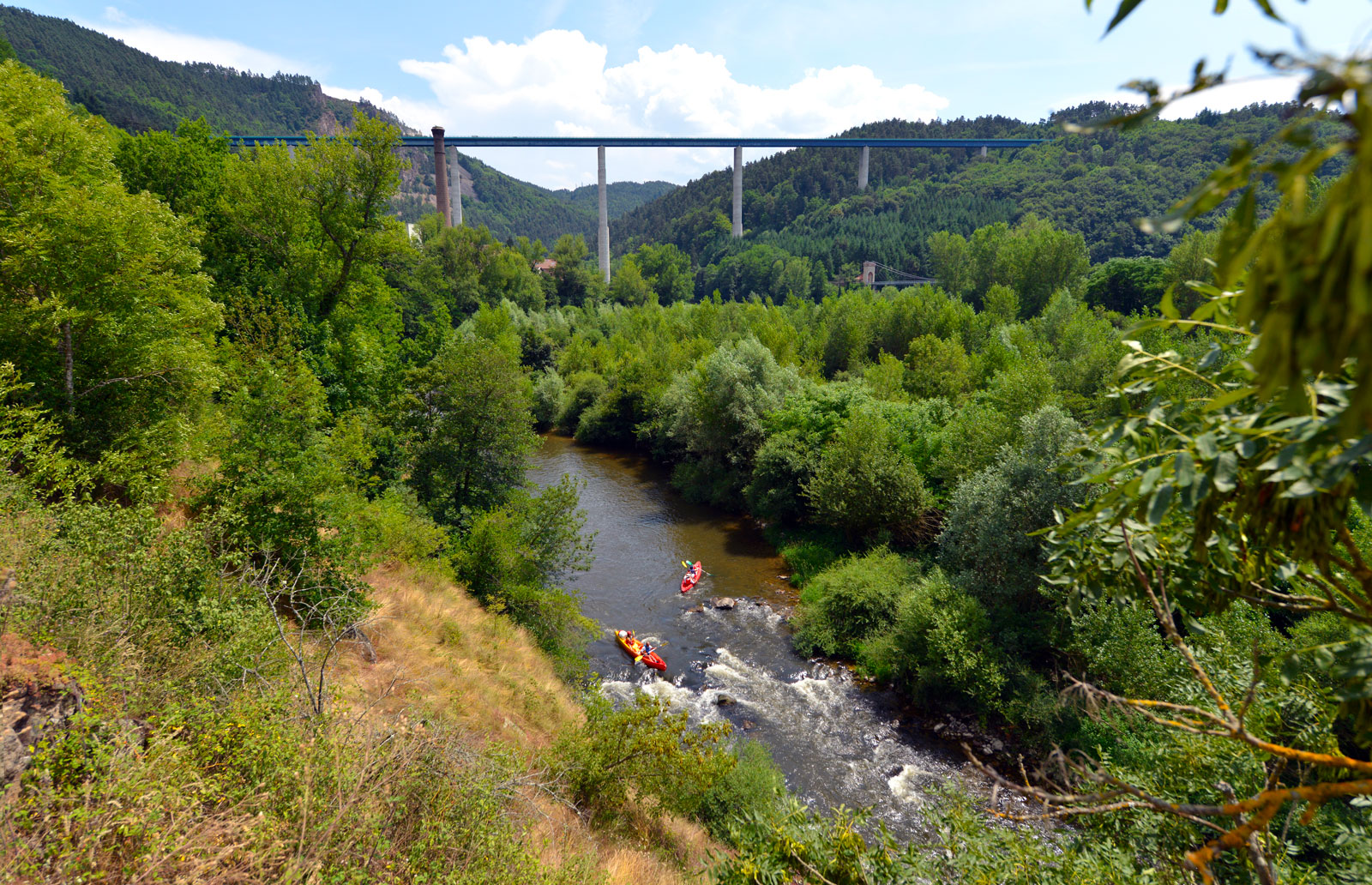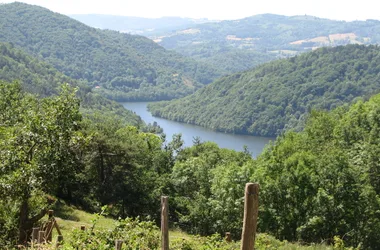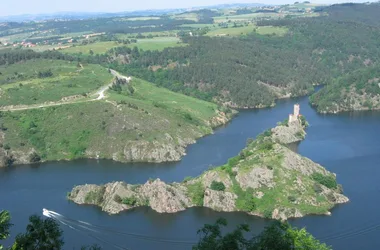Taking its source at Mont Gerbier de Jonc, it travels a long rugged journey in the Mont du Velay and comes to rest for thirty kilometers on the grangent dam, before crossing the plain of Forez and taking on another aspect.
1012 kilometers long, the Loire is the largest river in France and is described as the last wild river in Europe.
The Loire gorges benefit from considerable ecological wealth. Indeed, this site of nearly 3000 hectares which marks the border between the Monts du Velay and the plain, has a mosaic of natural environments resulting from the presence of microclimates. local. Gorges with steep slopes favor the existence of microregions benefiting from different climatic conditions depending on their orientations, altitudes, sunshine and their topographical profiles.
This alternation of diverse natural environments also favors the presence of fauna of interest, mainly on an ornithological level.
Natural border between the Massif Central, the Monts du Lyonnais and the Monts du Pilat, the Loire gorges are mainly based on granite rocks.
The site has a particular climate, marked by three major influences: Mediterranean, continental and oceanic. This so-called “degraded continental” climate results in cold and dry winters and hot and humid summers.
Furthermore, its marked relief allows for great variations in exposure. All these elements make it possible to bring to life a wide variety of fauna and flora: yellow-bellied ringing toad, azure thyme butterfly and even red kites share the landscape.
The rapid variation in altitude and slope exposure offers a great diversity of forest species. Mediterranean trees like the Montpellier maple or the maritime pine and more continental species like the beech coexist a few meters apart. Dead wood and cavities are very favorable to small mammals such as the Bechstein's murine mouse or even species of birds such as the black woodpecker.
We find dry lawns in hilly areas, because the soil is thin and the rock almost flush. Grasslands are located on plateau areas with richer soil. These areas have a great floral wealth (including certain protected species) and are environments coveted by certain birds (lark lulu, red-backed shrike) and butterflies (azuré de Serpolet in particular).
These spaces are composed of callunes, low grasses and small shrubs on acidic and poor soils. Typical of the Loire gorges, the moors offer beautiful colored shades in summer, oscillating between the golden yellow of the purgative broom and the purple of the callune. These spaces allow raptors like the short-toed short-toed bird to watch for reptiles or the European nightjar to go in search of moths.
Many plant species grow on rocks such as the granite carnation, a perennial plant growing on granite soils, or the Venus navel, growing in the wettest places, often clinging to cliffs. There we find the Great Horned Owl, the largest nocturnal bird of prey in Europe, generally nesting near cliffs and rocky escarpments.
The Grangent dam holds back the Loire, forming a body of water several kilometers long, where you can encounter the bouvière, a fish of calm and stagnant waters. Three tributaries are also present: the Ondaine, the Lizeron and the Grangent. Small ponds also provide shelter and shelter for many species, such as the yellow-bellied ringer, a small toad.
The Loire gorges benefit from considerable ecological wealth. Indeed, this site of nearly 3000 hectares which marks the border between the Monts du Velay and the plain, has a mosaic of natural environments resulting from the presence of microclimates. local. Gorges with steep slopes favor the existence of microregions benefiting from different climatic conditions depending on their orientations, altitudes, sunshine and their topographical profiles.
This alternation of diverse natural environments also favors the presence of fauna of interest, mainly on an ornithological level.
Natural border between the Massif Central, the Monts du Lyonnais and the Monts du Pilat, the Loire gorges are mainly based on granite rocks.
The site has a particular climate, marked by three major influences: Mediterranean, continental and oceanic. This so-called “degraded continental” climate results in cold and dry winters and hot and humid summers.
Furthermore, its marked relief allows for great variations in exposure. All these elements make it possible to bring to life a wide variety of fauna and flora: yellow-bellied ringing toad, azure thyme butterfly and even red kites share the landscape.
The rapid variation in altitude and slope exposure offers a great diversity of forest species. Mediterranean trees like the Montpellier maple or the maritime pine and more continental species like the beech coexist a few meters apart. Dead wood and cavities are very favorable to small mammals such as the Bechstein's murine mouse or even species of birds such as the black woodpecker.
We find dry lawns in hilly areas, because the soil is thin and the rock almost flush. Grasslands are located on plateau areas with richer soil. These areas have a great floral wealth (including certain protected species) and are environments coveted by certain birds (lark lulu, red-backed shrike) and butterflies (azuré de Serpolet in particular).
These spaces are composed of callunes, low grasses and small shrubs on acidic and poor soils. Typical of the Loire gorges, the moors offer beautiful colored shades in summer, oscillating between the golden yellow of the purgative broom and the purple of the callune. These spaces allow raptors like the short-toed short-toed bird to watch for reptiles or the European nightjar to go in search of moths.
Many plant species grow on rocks such as the granite carnation, a perennial plant growing on granite soils, or the Venus navel, growing in the wettest places, often clinging to cliffs. There we find the Great Horned Owl, the largest nocturnal bird of prey in Europe, generally nesting near cliffs and rocky escarpments.
The Grangent dam holds back the Loire, forming a body of water several kilometers long, where you can encounter the bouvière, a fish of calm and stagnant waters. Three tributaries are also present: the Ondaine, the Lizeron and the Grangent. Small ponds also provide shelter and shelter for many species, such as the yellow-bellied ringer, a small toad.
Tips and Suggestions
Installation of 15 RIS panels (Intelligence / Information /
Service) in the Loire gorges.
Locating and information panels on the Loire gorges, they offer a general map of the gorges, ideas for walks, information on the protective devices, a general presentation of the site, its history, its heritage, the things to see or do depending on where they are located. A display case
temporary display is also provided to integrate information
temporary such as animations or activities proposed on the gorges of the Loire.
Rankings u0026amp; Labels
- Nature reserve of France
- Sensitive Natural Spaces
- Natura 2000
Location details
http://www.reserves-naturelles.org/gorges-de-la-loire
Opening
| Opening hours from January 01 to December 31, 2024 | |
|---|---|
| Monday | Open |
| Tuesday | Open |
| Wednesday | Open |
| Thursday | Open |
| Friday | Open |
| Saturday | Open |
| Sunday | Open |
Prices
Services
Home animals





